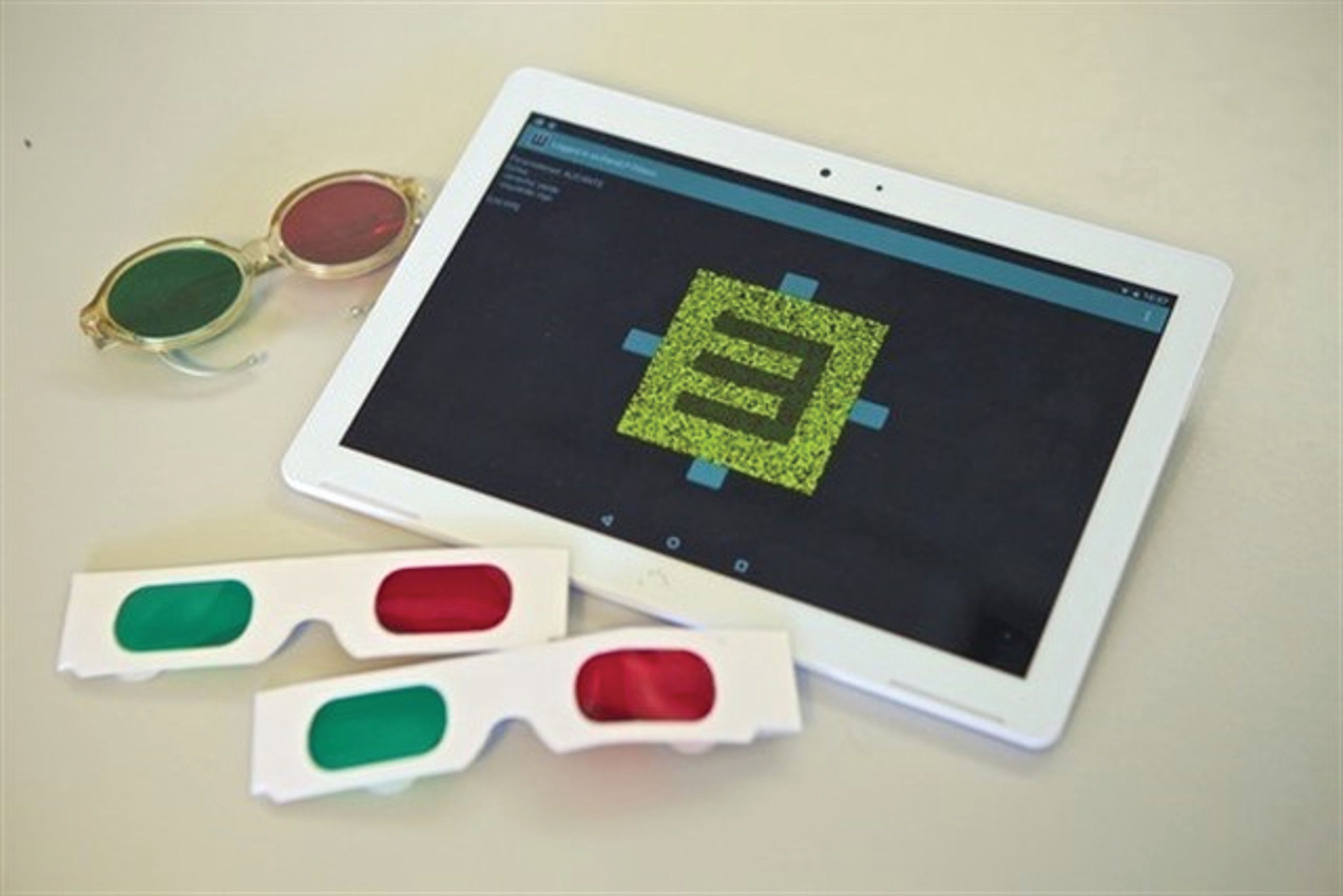New amblyopia test outperforms ‘gold standard’
Hungarian scientists have developed a new, dynamic random dot stereotest for amblyopia screening which outperformed the ‘gold standard’ stereotests.
The University of Pécs’ Euvision Tab screening system has been designed to offer a more versatile stereotest using modern technology. This is in contrast to current stereotest challenges, which include the use of monocular cues causing inaccurate stereoacuity values and a limited predetermined set of stimuli affecting the ratio of both the false-positive and false-negative passes, said researchers.
A clinical study at the Vithas Medimar Hospital in Alicante, Spain, involving 473 children (aged 4–14 years) showed good sensitivity and specificity for the detection of amblyopia using different dot density and pass/fail criterion for the disparity-defined Snellen-E optotype (DRDSE) test (100% and 81%). With the Lang II system, sensitivity was only 48.4%, with a specificity of 98%.
“The DRDSE test with the latest improvements in dot density and pass/fail criteria is a valuable tool for amblyopia screening and gives a better performance than other tests considered as the gold standard for screening. The test is very sensitive and specific enough for the detection of amblyopia in children,” said researchers.
The main advantages of the Euvision test is it’s quick to do, only five minutes (including the explanation of the task to the children) and is easy to use after a short amount of training for non-professional examiners such as teachers, parents, district nurses or social workers, they continued. The only technical requirements are a tablet or mobile phone (Android compatible) with the appropriate software and red-green spectacles. The screening system can also be used to perform a remote examination by using various video conference programmes, which only require the anaglyphic glasses to be sent to the patient prior to examination.
More studies are underway to evaluate further test improvements in large samples, as well as to analyse its diagnostic performance for other visual conditions.
The research was led by Euvision CEO, Professor Gábor Jandó, from the University of Pécs’s medical school and published in Ophthalmology Times Europe.


























